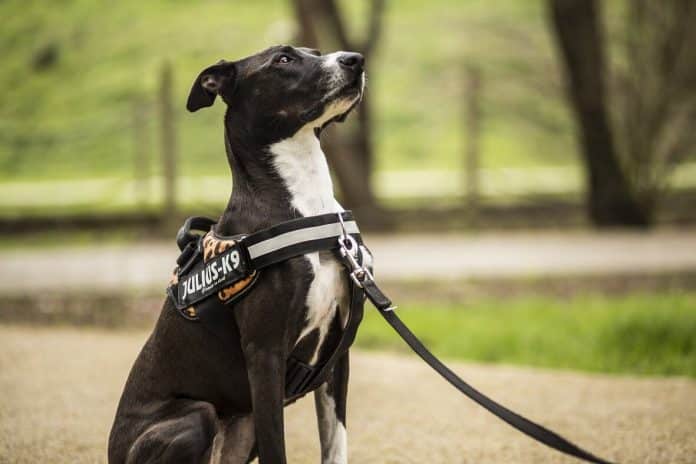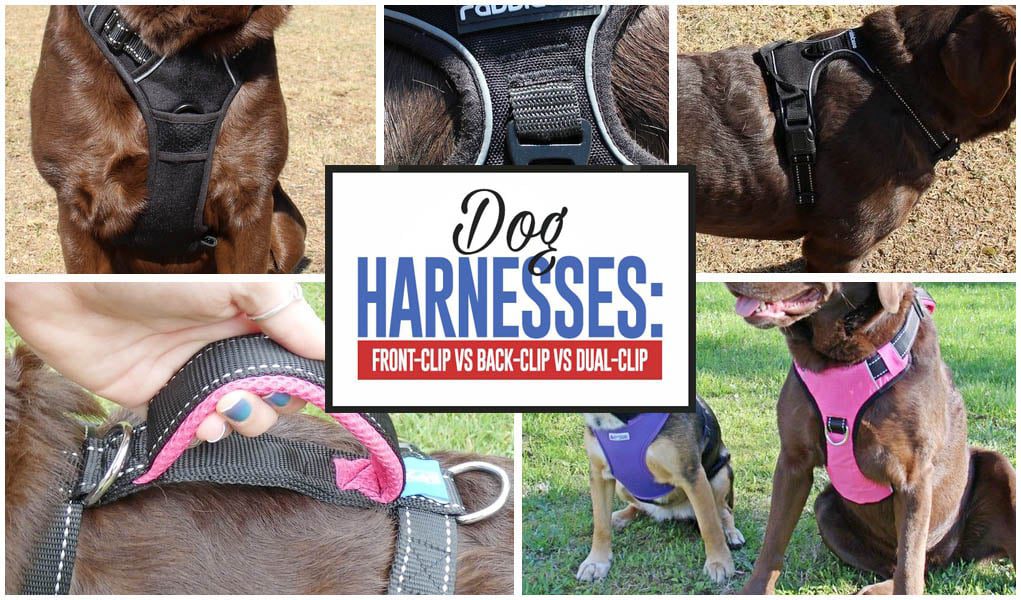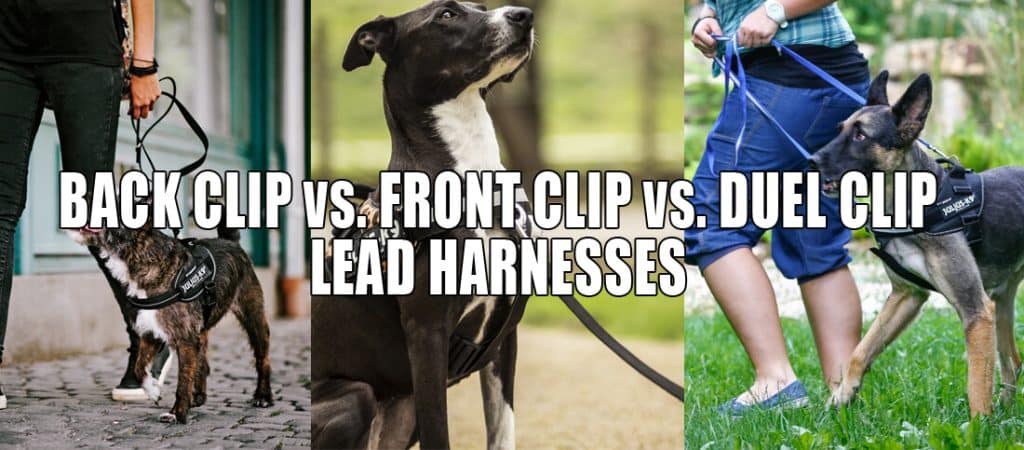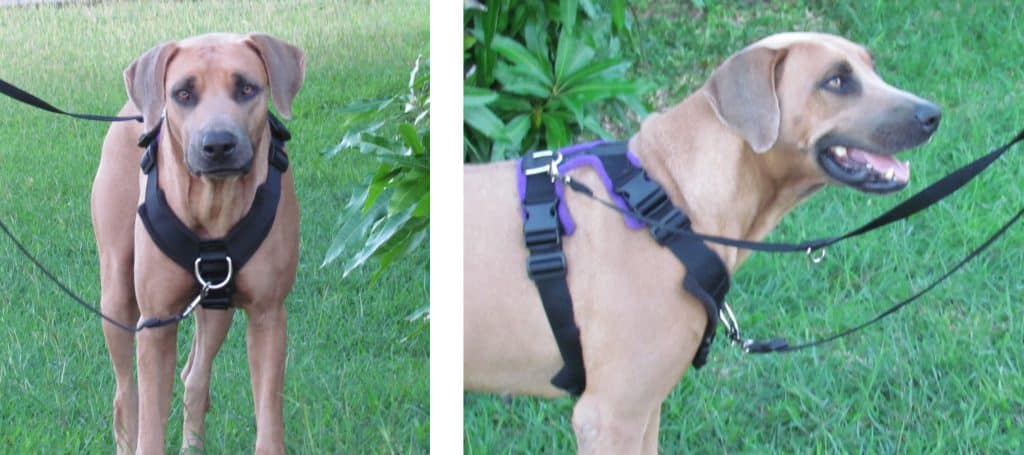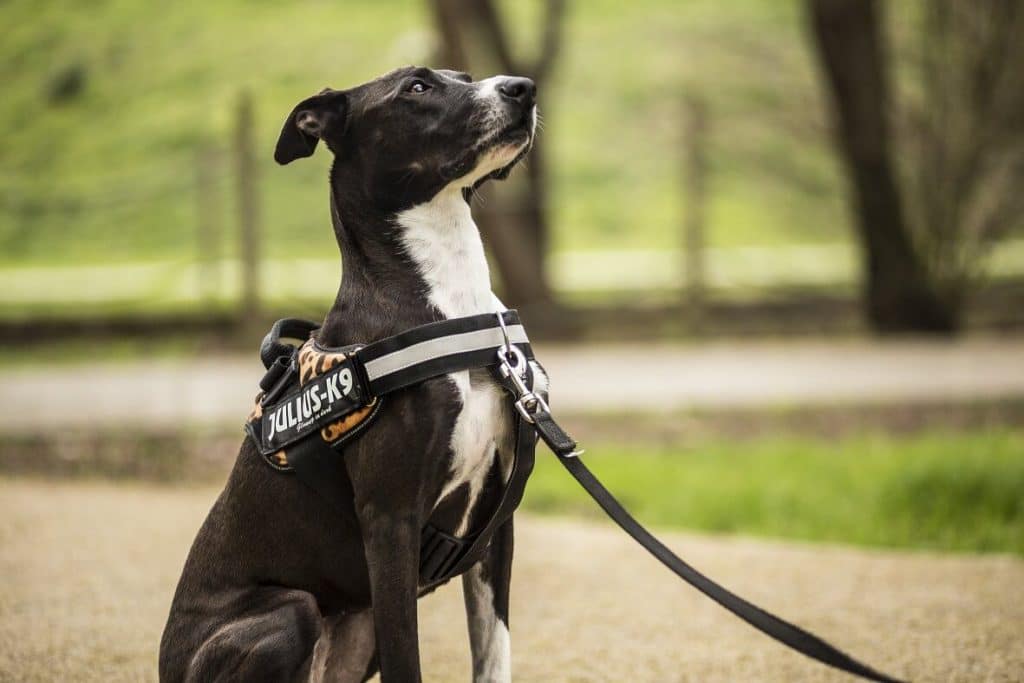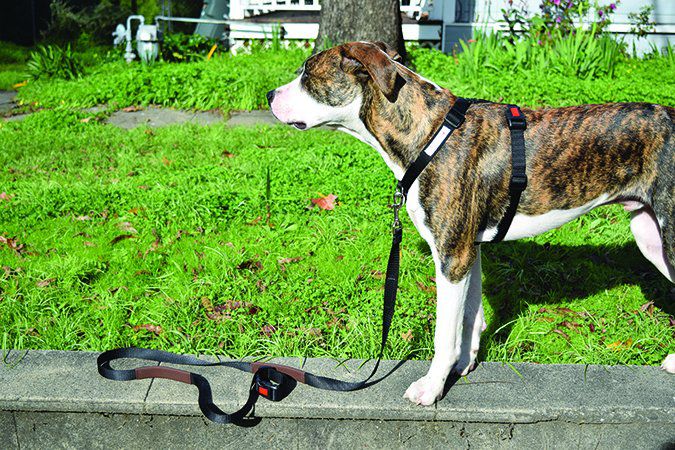In the quest to find the perfect harness for our furry companions, we often stumble upon the age-old debate: are front-clip dog harnesses better than back clips? As avid dog lovers, we understand the importance of choosing the correct harness for our four-legged friends.
This article will explore the advantages and disadvantages of front and back clip harnesses, shedding light on which option may be the best fit for our beloved canine pals. So, whether you’re a seasoned dog owner or a curious newcomer to harnesses, join us as we embark on this informative journey to discover which style reigns supreme.
Benefits of Front Clip Dog Harnesses
Improved Control and Steering
Front clip dog harnesses provide improved control and steering compared to back clip harnesses. The attachment point on the front of the harness, usually located on the chest area, gives you more leverage and allows you to redirect your dog’s movements more effectively. This is particularly useful when walking in crowded or busy areas where you need to grip your dog’s movements tightly.
Reduced Pulling
One of the significant benefits of using a front clip harness is its ability to reduce pulling. When a dog wears a back clip harness, the pressure is distributed across their chest and shoulders, inadvertently encouraging them to pull forward. On the other hand, a front clip harness redirects the pulling motion to the side, making it much harder for dogs to lunge forward. This can significantly improve the walking experience, making it more enjoyable for you and your furry friend.
Prevention of Choking and Neck Strain
Unlike traditional dog collars that pressure the neck, front clip harnesses distribute the force exerted when your dog pulls across the chest and shoulders. This reduces the risk of choking, throat injuries, and neck strain, which can occur when using a collar or a back clip harness. By eliminating this potential harm, front clip harnesses ensure the safety and well-being of your dog during walks and other activities.
Safe for Small and Toy Breeds
Front clip harnesses are particularly beneficial for small and toy breeds due to their delicate structure and fragile necks. These breeds are more susceptible to tracheal collapse and other respiratory issues, which can be exacerbated by the strain caused by pulling on a collar or a back clip harness. Using a front clip harness, you can protect their sensitive necks and ensure they can enjoy their walks without injury.
Training Aid for Leash Reactivity
Many dogs react negatively to triggers such as other dogs, people, or loud noises on a leash. This behavior, known as leash reactivity, can be challenging to manage and may lead to frustration and stress for the dog and the owner. Front clip harnesses can serve as a valuable training aid for leash-reactive dogs. The redirection of the pulling motion helps to re-frame their behavior. It encourages them to focus more on their handler, making working on their reactivity and promoting positive social interactions easier.
Drawbacks of Front Clip Dog Harnesses
Difficulty in Putting on and Adjusting
One drawback of front-clip dog harnesses is that they can be more challenging to put on and adjust than back-clip harnesses. The design of front clip harnesses requires you to carefully thread your dog’s legs through specific openings, which may take some time and practice to get used to. Additionally, achieving the correct fit can be more intricate, as the straps and buckles must be adjusted appropriately to ensure a secure and comfortable fit for your pup.
Potential for Escape
Front clip harnesses, while effective at reducing pulling and improving control, may have a higher potential for dogs to escape compared to back clip harnesses. Some dogs skilled at slipping out of their harnesses may find it easier with a front clip harness. It is crucial to choose a front clip harness with a durable and secure closure system and regularly inspect the harness for any signs of wear or damage to prevent potential escapes.
Limited Range of Motion
Front clip harnesses can somewhat restrict a dog’s range of motion. The attachment point on the front of the harness may inhibit natural shoulder movement and freedom of motion in the front legs. While this may not be a significant issue for most dogs during routine walks, it is something to consider if your dog participates in activities that require a wide range of motion, such as agility or running.
Not Ideal for Strong Pullers
Although front clip harnesses help reduce pulling, they may not be the most suitable option for dogs with powerful pullers or significant leash-related behavior issues. While front clip harnesses provide better control and pull redirection, determined pullers may still find ways to continue their pulling behavior. In such cases, additional training and behavior modification techniques may be necessary to address the underlying issues.
This image is the property of topdogtips.com.
Advantages of Back Clip Dog Harnesses
Ease of Use
One of the primary advantages of back clip dog harnesses is their ease of use. Putting on and adjusting a back clip harness is straightforward and does not require threading a dog’s legs through specific openings. This makes it a convenient option for pet owners who prefer a quick and hassle-free harnessing process.
Comfort for Dogs with Breathing Issues
Back clip harnesses are especially suitable for dogs with breathing issues, such as brachycephalic breeds or respiratory illnesses. As the attachment point is positioned on the back, no pressure is applied to the dog’s chest or throat, minimizing the risk of aggravating their breathing difficulties. This allows dogs with respiratory problems to enjoy their walks comfortably without unnecessary strain on their respiratory system.
Maintains Full Range of Motion
Compared to front clip harnesses, back clip harnesses offer a full range of motion for dogs. The attachment point on the back allows dogs to move their shoulders and legs freely without any restrictions. This is particularly beneficial for active dogs or those involved in sports or activities that require agility and a wide range of motion.
Suitable for Well-Behaved Dogs
Back clip harnesses are generally suitable for well-behaved dogs that do not have significant pulling or leash-reactivity issues if your dog walks comfortably on a loose leash and does not exhibit any behavior problems while on a walk, a back clip harness can be a comfortable and convenient choice for their daily exercise routine.
Disadvantages of Back Clip Dog Harnesses
Less Control and Steering
Back clip harnesses provide less control and steering compared to front clip harnesses. With the attachment point on the dog’s back, the pulling motion is not redirected to the side as effectively as with a front clip harness. This makes it more challenging to redirect your dog’s direction and can be a disadvantage in situations where precise control is necessary, such as busy city sidewalks or crowded parks.
Encourages Pulling
One drawback of back clip harnesses is their potential to encourage pulling behavior. As the pressure is applied to the dog’s chest and shoulders, some dogs may interpret this sensation as a cue to pull forward, especially if they are already inclined to do so. While back clip harnesses may not cause pulling directly, their design does not actively discourage or redirect pulling behavior as effectively as front clip harnesses do.
Risk of Neck Injuries
Back clip harnesses can pose a risk of neck injuries, especially for dogs that tend to pull excessively or abruptly change directions. The force exerted on the neck when the dog reaches the end of the leash can strain the neck and potentially cause injuries to the delicate structures in the throat and cervical spine. This is why it is crucial to properly fit and use back clip harnesses to minimize the risk of neck injuries.
Escape Artist’s Favorite
Some dogs are escape artists and can find ways to slip out of their harnesses, particularly with back clip harnesses. The position of the attachment point on the back of the harness provides more leverage for dogs to attempt to wriggle out of the harness. It is essential to choose a back clip harness with a secure and reliable closure system and regularly check the harness’s fit and condition to prevent any unforeseen escapes.
This image is the property of julius-k9.co.uk.
When to Choose a Front Clip Harness
Puppies and Young Dogs
Front clip harnesses are particularly beneficial for puppies and young dogs still learning leash manners and proper walking etiquette. The improved control and steering provided by front clip harnesses can aid in training and redirecting their attention, ultimately teaching them to walk politely on a leash.
Dogs with Leash Reactivity
If you have a dog that displays leash reactivity, such as lunging, barking, or growling towards other dogs or strangers, a front clip harness can be a valuable tool to help manage their behavior. By redirecting their pulling motion to the side, front clip harnesses make it easier to regain control and shift their focus away from triggers, allowing for more positive interactions and training opportunities.
Small and Toy Breeds
Front clip harnesses are an excellent choice for small and toy breeds due to their delicate necks and potential respiratory issues. These breeds are more susceptible to tracheal collapse and other respiratory problems, and using a front clip harness can prevent unnecessary strain on their necks, ensuring their safety and comfort during walks.
When to Choose a Back Clip Harness
Well-Trained Dogs
Back clip harnesses are suitable for well-trained dogs who walk calmly on a loose leash and do not exhibit any pulling or leash-reactivity issues. If your dog consistently maintains a relaxed and controlled walking style, a back clip harness can provide comfort and convenience during your walks.
Dogs with Breathing or Mobility Issues
For dogs with breathing or mobility issues, such as elderly dogs or those suffering from arthritis, back clip harnesses can be a more comfortable option. They avoid putting pressure on the chest area, allowing these dogs to enjoy walks without exacerbating their health conditions.
Casual Walks in Low Distraction Areas
Back clip harnesses are appropriate for casual walks in low-distraction areas where precise control is not a significant concern. Suppose you are walking your dog in a familiar neighborhood or a quiet park with minimal distractions. In that case, a back clip harness can provide comfort and freedom of movement for you and your canine companion.
This image is the property of kiwi canine.co.nz.
Tips for Proper Harness Fit
Measure Your Dog Properly
To ensure a proper harness fit, measuring your dog’s girth accurately is essential. Use a flexible measuring tape around the broadest part of their chest, just behind their front legs. Refer to the manufacturer’s sizing guide to determine the appropriate size for your dog’s measurements. Avoid choosing a too loose or tight harness, as an ill-fitting harness can cause discomfort and may not provide the desired control and safety.
Adjust Straps Correctly
Once you have selected the correct size harness for your dog, it is crucial to adjust the straps correctly to achieve a secure and comfortable fit. The harness should fit snugly around your dog’s body without being too tight or restrictive. Ensure you can fit two fingers comfortably between the harness and your dog’s body to ensure proper airflow and prevent chafing or discomfort.
Perform Fit Checks Regularly
Harnesses may stretch or loosen over time, so it is crucial to regularly perform fit checks to ensure a secure fit. Check the straps and buckles for signs of wear or damage, and readjust the harness if necessary. Regular fit checks help maintain the safety and effectiveness of the harness and ensure that your dog is comfortable during their walks.
How to Introduce a Dog to a Harness
Gradual Introduction
When introducing your dog to a harness, it is essential to take a gradual and positive approach. Start by allowing your dog to familiarize themselves with the harness without wearing it. Let them sniff and investigate the harness while associating it with positive experiences, such as treats or playtime. Once your dog is comfortable with the presence of the harness, gradually introduce wearing it for short periods, rewarding them with treats and praise. Gradually increase the duration of wearing the harness until your dog is comfortable wearing it for more extended.
Positive Reinforcement Training
Positive reinforcement techniques, such as treats, praise, and rewards, can help create a positive association with the harness. Reward your dog for allowing you to put the harness on and for wearing it without resistance. This will help build a positive association and make the harness-wearing experience enjoyable for your furry friend.
This image is the property of julius-k9.co.uk.
Finding the Right Harness for Your Dog
Consider Your Dog’s Breed and Size
When choosing a harness, consider your dog’s breed and size. Different breeds may have specific body types requiring harnesses to fit their unique proportions. Additionally, dogs of different sizes may require different harness sizes to ensure a comfortable and secure fit. Refer to the manufacturer’s sizing guide and choose a harness appropriate for your dog’s breed and size.
Assess Your Dog’s Behavior and Needs
Assess your dog’s behavior and specific needs when selecting a harness. Consider factors such as pulling tendencies, leash reactivity, and health conditions. Front clip harnesses may be more suitable for dogs with leash reactivity or vital pulling behaviors. In contrast, back clip harnesses may be more comfortable for well-behaved dogs or those with respiratory issues. Understanding your dog’s behavior and needs will help you decide when choosing a harness.
Consult with a Professional
If you are unsure which type of harness is best for your dog, consider consulting with a professional, such as a veterinarian or a professional dog trainer. They can provide valuable insights and recommendations based on your dog’s needs and behavior. An expert’s opinion can help you make an informed decision and find the correct harness that suits your dog’s requirements.
Conclusion
When choosing between front-clip and back-clip dog harnesses, there is no one-size-fits-all answer. Both types of harnesses have advantages and disadvantages, and the right choice depends on your dog’s needs and behavior. Front clip harnesses offer improved control, reduced pulling, and prevention of choking and neck strain.
They are particularly beneficial for puppies, dogs with leash reactivity, and small or toy breeds. On the other hand, back clip harnesses provide ease of use and comfort for dogs with breathing issues and maintain a full range of motion. They are suitable for well-behaved dogs and those with respiratory or mobility issues. It is essential to consider your dog’s breed, size, behavior, and specific needs when selecting a harness.
Remember to measure your dog accurately, adjust the straps correctly, and regularly perform fit checks to ensure a secure and comfortable fit. By considering these factors and choosing the appropriate harness, you can ensure the safety, comfort, and enjoyment of your furry friend during your walks together.
This image is the property of s28489.pcdn.co.

